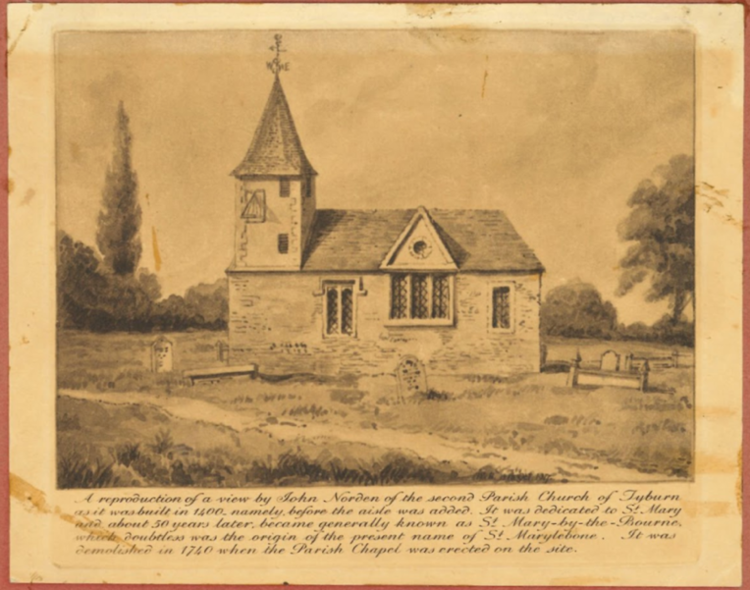Heritage: The Four Churches
The Second Parish Church
The second parish church was dedicated to the Blessed Virgin Mary. By 1400, Tyburn had become synonymous with public hangings, as the crossroads at Marble Arch were used as a place of execution. To distance themselves from this morbid reputation, the villages began to call the village Mary-burn (“burn” referring to the River Tyburn). Over time, this moniker evolved to become St Mary-le-bone, a name which has endured for over 800 years. Thus, St Marylebone Parish Church has performed a vital role in not only serving its community, but also in giving the parish its very name.
The second church building was a small chapel and, though no photographs exist of this building, we do have illustrations that give us a sense of its modest exterior appearance. We are also given an insight into the interior of the parish church by William Hogarth’s painting The Rake’s Marriage, c.1730.
In the satirical series of paintings A Rake’s Progress, Hogarth depicts the life of Tom Rakewell, the son of a wealthy merchant whose extravagant lifestyle and missteps lead to his ultimate downfall. In The Rake’s Marriage, Hogarth depicts Rakewell marrying an older wealthy woman to use her money to pay his debts, while casting his eye upon her younger maid. Not only does this painting show how ramshackled the second parish church was becoming by the early 18th century, but it also alluded to the reputation of the church building for performing clandestine wedding ceremonies, such as Francis Bacon’s 1606 marriage to his 13-year-old child bride Alice Barnham.


